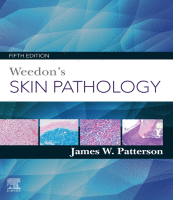Physical Address
304 North Cardinal St.
Dorchester Center, MA 02124

Introduction Tumors of the epidermis are a histopathologically diverse group of entities that have in common a localized proliferation of keratinocytes resulting in a clinically discrete lesion. They may be divided into a number of categories, reflecting their different biological…

Introduction The phylum Arthropoda, which accounts for approximately 75% of animal species, is one of the most important sources of human pathogens. As well as acting as vectors of bacteria, viruses, rickettsiae, chlamydiae, spirochetes, protozoa, and helminths, arthropods may also…

Introduction Helminthic parasites are responsible for a number of important diseases of tropical countries, including schistosomiasis, caused by the trematode flukes; cysticercosis and sparganosis, resulting from the larvae of certain tapeworms (cestodes); and onchocerciasis, dirofilariasis, and larva migrans occurring as…

Introduction Cutaneous injuries from various forms of marine life are uncommon recreational and occupational hazards. Many of the species encountered have a specific geographical localization. In most instances, a localized urticarial and inflammatory lesion results at the point of injury,…

Introduction The protozoa are single-celled organisms of great medical importance. There are six categories, covering several phyla; not all are of dermatopathological interest: Amebae Flagellates Coccidia Microsporidia Ciliates Sporozoa The amebae include the organisms that cause amebiasis and acanthamebiasis. The…

Introduction Viral infections of the skin are of increasing clinical importance, particularly in patients who are immunocompromised. Viruses may reach the skin by direct inoculation, as in warts, milker's nodule, and orf, or by spread from other locations, as in…

Introduction Fungal infections of the skin are an important category of cutaneous disease. Included in this chapter are the dermatophytes, which produce countless millions of skin infections each year, and the systemic and related mycoses, whose clinical importance usually pertains…

Introduction The order Spirochaetales has two genera of medical importance, Treponema and Borrelia . Spirochetes are one of the few bacterial groups for which classic morphological criteria and RNA sequence analyses agree in predicting the phylogenetic relationships among the various…

Introduction Various bacteria form part of the normal resident flora of the skin. In the past, these organisms were regarded as symbiotic, but there is emerging evidence that these organisms may protect the host; as such, they are mutualistic rather…

You’re Reading a Preview Become a Clinical Tree membership for Full access and enjoy Unlimited articles Become membership If you are a member. Log in here